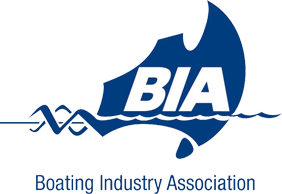Anchoring, Mooring, and Docking Your Boat
29 March 2022Three things about boating that you should fully understand are anchoring, mooring, and docking. These activities are all be useful for securing your boat in position safely on the water. However, they have several differences that boat owners like you must know. Here are some of their differences.
Anchoring
Anchoring is done by lowering an anchor that is connected to your boat into the water. Once the anchor is lowered into the water, it will secure itself to the seabed with hooks or various other features, keeping your boat in position. This activity can be done as long as you utilise a long anchor cable using chain or chain and rope.
There are various styles of anchor, which are utilised in different areas like a sandy seabed or reef seabed for example. An anchor used in the wrong area can cause issues and damage to the seabed or your yacht. It is important to purchase the right size anchor for the size and weight of your vessel to ensure you can safely and securely anchor in various weather conditions.
One common misconception about anchoring is the importance of anchor chain. The main purpose of anchor chain is to use its weight to ensure the anchor stays bedded in the seabed. When the correct amount of chain is let out during anchoring, numerous metres of chain will lay along the seabed with a long gradual curve up to the boats bow. Swell, wind, the vessels weight, and length all effect how much chain should be let out, for example large swell and wind serges will push the vessel backwards with more force, causing the amount of chain laying along the sea floor to decrease then increase in lulls.
Riggtech strongly discourages joining chain, as various joiners will never be as strong as the rest of the chain links, this can be especially unsafe when anchoring overnight, as the link can break while everyone is asleep and can lead to disastrous outcomes.
Mooring
Mooring is done by tying the bow of your vessel directly to professionally installed and existing mooring line. When mooring your boat in open water, you must hook the mooring buoy or rope with a boat hook and pull the line in until you reach the thicker and stronger line. Once you have the mooring line, feed it through the bow fitting and hook it onto a strong point at the bow of the boat, in most cases this will be a large horn cleat. It is also important to know about the different colour mooring buoys, as different colours are allocated for different sized boats, and they can be owned by different organisations or individuals.
When leaving a mooring, make sure the motor is on and everyone is onboard and ready to go. Then put the vessel in forward at a very slow pace to release the tension off the mooring line, making it easier for the person at the bow to remove the line safely.
Docking
Docking is conducted by securing the vessel to a dock or wharfwith dock lines and nautical knots.The safety of your boat, additionally, can be enhanced by utilising four or more fenders on both sides. Fenders are plastic, foam or rubber inflated devices that can serve as a buffer between the dock and your boat, protecting your beloved asset from potential damages from the dock and other boats.Docking is necessary for you and others to disembark the boat onto the dock. It can also help load and unload things effectively and provide you with enough space for boat maintenance.
To learn more orto purchase items needed for these processes, contact us at Riggtech.
Optimized by: Netwizard SEO


